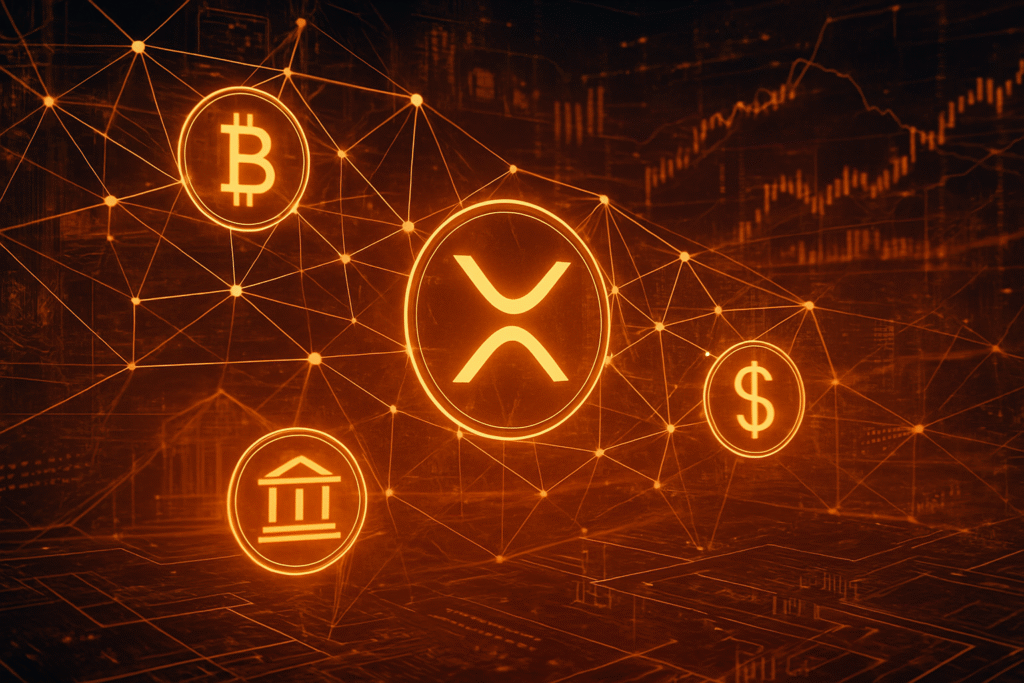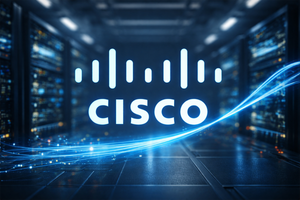Financial News
Ripple’s Dual Power Play: $1 Billion Acquisition and National Bank Ambition Shake Up Traditional Finance

October 21, 2025 – In a bold and multi-faceted strategic maneuver, blockchain giant Ripple has sent ripples throughout the traditional financial sector and the broader crypto ecosystem. Just days ago, on October 16, 2025, the company announced a monumental $1 billion acquisition of GTreasury, a leading corporate treasury management software provider. This move, coupled with its earlier formal application for a U.S. national bank charter with the Office of the Comptroller of the Currency (OCC) around July 2-3, 2025, signals Ripple's aggressive intent to embed digital assets deep within the global financial infrastructure and challenge established banking paradigms.
The immediate reaction to these developments has been a mix of cautious optimism from crypto proponents and strong opposition from traditional banking institutions. Critics, notably the Independent Community Bankers of America (ICBA) and the American Bankers Association (ABA), have voiced significant concerns, arguing that Ripple's ambitions could erode regulatory safeguards and destabilize the financial system. For the crypto ecosystem, these strategic plays are seen as a pivotal moment, potentially legitimizing digital assets further in institutional finance and significantly increasing the utility of XRP, Ripple's native cryptocurrency, by connecting it directly to a vast network of corporate treasuries and potentially operating under federal oversight. The convergence of these two major initiatives underscores Ripple's long-term vision to bridge the gap between blockchain technology and mainstream finance, fundamentally altering how capital moves globally.
Market Impact and Price Action
Ripple's dual strategic moves have elicited distinct, yet significant, reactions across the cryptocurrency markets, particularly for its native token, XRP. The announcement of the national bank charter application in early July 2025 initially ignited a strong bullish sentiment, while the more recent $1 billion GTreasury acquisition in mid-October navigated a more volatile market landscape.
The news of Ripple's formal application for a U.S. national bank charter with the OCC around July 2-3, 2025, was met with considerable enthusiasm. XRP's price surged by 5% immediately following the report, climbing above $2.28. This positive momentum continued throughout July, with XRP rallying 3% by July 21 to reach $3.70, nearing its all-time high of $3.84. As of July 19, XRP was trading between $3.42 and $3.57, reflecting an impressive 300% yearly gain, partly fueled by the bank charter application and growing speculation around XRP Exchange-Traded Funds (ETFs). The launch of the ProShares XRP ETF in July 2025, coinciding with the bank charter announcement, further propelled XRP to $2.93. Trading volume for XRP climbed by 38% daily to $3.65 billion on July 2, with derivatives open interest rising 8% to $4.5 billion and futures volume increasing 29% to $7.38 billion, indicating heightened investor interest. Technically, the market showed strong bullish momentum, with the Relative Strength Index (RSI) consistently above 72. Analysts identified a symmetrical triangle pattern since July, projecting potential breakouts towards $3.38, $3.67, and $3.95, with an inverse head-and-shoulders pattern also signaling significant upside. This response mirrored past positive regulatory milestones, such as the October 2024 resolution of the SEC vs. Ripple lawsuit, which saw a 20% price surge.
In contrast, the October 16, 2025, announcement of Ripple's $1 billion acquisition of GTreasury, while strategically significant, unfolded amidst a more turbulent market. XRP initially saw a modest 4% uptick in the hours following the news. However, this positive sentiment was quickly overshadowed by broader crypto market volatility, including a "flash crash" that had occurred around October 10. Consequently, XRP experienced declines, dropping over 8% in the week, falling near $2.18, and a further 1.9% in the 24 hours leading up to October 17. Over nine days, XRP plunged 16.7% to approximately $2.3843, testing critical support levels. As of October 20, 2025, XRP showed signs of recovery, rebounding approximately 5.3% from its recent lows to around $2.36. However, October 21 saw a 2.50% decline, reportedly coinciding with a $120 million outflow from wallets linked to Ripple co-founder Chris Larsen, potentially to fund the acquisition. Despite the price struggles, trading volume notably surged by 14.25% on October 16, reaching $6.3 billion, and remained elevated at over $2.67 billion on October 19 and exceeding $4.6 billion on October 21. Technically, the preceding flash crash contributed to a bearish trend, with all Exponential Moving Averages (EMAs) acting as resistance and the MACD (Moving Average Convergence Divergence) deeply bearish. Despite this, XRP demonstrated resilience by holding critical support levels, with a breakout above the $2.55 level identified as a key pivot for short-term momentum.
The differing market reactions highlight the impact of broader market conditions and the perceived immediacy of regulatory versus business development news. While regulatory clarity often provides a clear catalyst for price appreciation, strategic acquisitions, even significant ones, can be subject to prevailing market sentiment and funding implications. The GTreasury acquisition, however, is fundamentally designed to enhance liquidity in corporate finance by integrating Ripple's blockchain rails, allowing for real-time liquidity management and efficient handling of stablecoins and tokenized deposits for large corporations, a long-term positive for XRP's utility.
Community and Ecosystem Response
Ripple's aggressive strategic maneuvers have ignited a fervent debate and a spectrum of reactions across the crypto community, from enthusiastic support among XRP loyalists to cautious skepticism from broader industry observers and outright opposition from traditional finance incumbents.
The announcement of Ripple's national bank charter application in early July 2025 was met with widespread enthusiasm, particularly within the XRP community. On social media platforms like X (formerly Twitter) and Reddit, the sentiment was overwhelmingly positive. Many viewed the move as a "game-changer" for Ripple, signaling a deep regulatory commitment and a pivotal step towards becoming a federally regulated financial institution. Discussions on Reddit's r/XRP subreddit frequently hailed the news as "bullish for XRP," with some users predicting its value would "skyrocket overnight" and solidify its role as a key piece of banking infrastructure. Crypto influencers and thought leaders largely echoed this optimism. Market analyst "STEPH IS CRYPTO" highlighted the OCC filing on X as a "potential game-changer" for XRP, even suggesting a price target of $10 if approved, driven by increased institutional confidence. The prevailing sentiment was that such approval would set a significant precedent for other blockchain firms and accelerate the integration of digital assets into mainstream finance. This confidence was further underscored by crypto prediction platform Polymarket, which showed an 86% probability of SEC approval for a spot XRP ETF, with Ripple's bank charter contributing significantly to this high forecast. However, not all reactions were positive. Traditional banking trade groups, including the American Bankers Association and America's Credit Unions, urged the OCC to delay approving such applications, citing "substantial concerns" over insufficient public information and fears of "backdoor applications to become national banks." The National Community Reinvestment Coalition (NCRC) also voiced strong opposition, pointing to Ripple's past enforcement actions and litigation, and expressing worries about regulatory arbitrage and systemic risk. Within the crypto community, some analysts raised concerns about potential centralization, questioning whether Ripple's closer ties to traditional banking might dilute the decentralized ethos of DeFi, and debated whether the charter would "sideline XRP or supercharge it," though the consensus leaned towards formalizing XRP's role in liquidity. While seen as potentially bringing enhanced regulatory clarity to the DeFi sector, no direct impact on NFT projects or Web3 applications was explicitly noted, with discussions primarily centering on stablecoins and traditional finance integration.
More recently, Ripple's October 16, 2025, $1 billion acquisition of GTreasury was widely discussed as a "bombshell" move designed to embed Ripple deeply into global corporate finance. Social media was abuzz with excitement, with Reddit users proclaiming "Game. Set. Match." and suggesting that Ripple was "going to create its own rules and use these acquisitions to pump the usage of XRP." The sentiment generally indicated that the acquisition would "shore up their ledger" and "provide investors with confidence." Data from LunarCrush showed a significant surge in conversations and engagements around XRP, with its AltRank "skyrocketing," reflecting considerable social momentum. Crypto influencers and analysts, while acknowledging the immediate market volatility, largely maintained a "cautiously optimistic long-term outlook," emphasizing the strategic importance of integrating GTreasury's extensive network, which notably utilizes the SWIFT network. This move was viewed as providing a "stronger fundamental backdrop" for XRP, validating institutional interest in Ripple's enterprise solutions. However, some skepticism emerged regarding the direct impact on XRP's price, with critics suggesting that the acquisition's emphasis on stablecoins might primarily benefit Ripple USD (RLUSD), especially since RLUSD also operates on the Ethereum blockchain, potentially minimizing influence on XRP's dynamics. Questions also arose on platforms like Reddit about whether this move signified "Ripple + Swift" or "Ripple VS Swift." The CIO of SWIFT, Tom Zschach, publicly questioned Ripple's client trust, regulatory capital, and settlement access, though this criticism was swiftly countered by crypto lawyer Bill Morgan. The acquisition is widely seen as a "tangible step towards integrating digital assets, including XRP and stablecoins like RLUSD, into the core operations of global corporations," and is expected to expand the use case for the XRP Ledger (XRPL) and the RLUSD stablecoin, with the primary impact centered on corporate finance, payments, and stablecoin adoption rather than direct effects on DeFi, NFT projects, or Web3 applications.
What's Next for Crypto
Ripple's ambitious strategic moves are poised to accelerate the convergence of traditional finance (TradFi) and digital assets, ushering in a new era of integration with profound short-term and long-term implications for the entire crypto market. The coming months and years will likely witness a significant reshaping of how digital assets are perceived, utilized, and regulated within the global financial ecosystem.
In the short term, the GTreasury acquisition, finalized on October 16, 2025, immediately expands Ripple's institutional reach, granting it access to GTreasury's extensive client base of over 1,000 enterprise customers, including Fortune 500 CFOs and treasurers, across 160 nations. This positions XRP and Ripple's stablecoin, RLUSD, for increased utility in corporate treasury management, enabling real-time liquidity and cross-border payment options for large corporations. This move directly challenges legacy systems like SWIFT by offering faster and cheaper settlements. The reported plan to establish a $1 billion XRP treasury through an entity backed by Ripple (Evernorth), involving open-market purchases of XRP, could also tighten supply, amplify XRP's liquidity, and boost market confidence, potentially transforming XRP into a competitive reserve asset for corporate treasuries. Simultaneously, the national bank charter application, filed around July 2-3, 2025, if approved, would provide Ripple with unparalleled regulatory legitimacy in the U.S. This would not only enhance institutional confidence in XRP-backed products but also allow Ripple to expand services traditionally offered by banks, such as holding deposits and providing custodial services, and potentially gain direct access to the Federal Reserve's payment infrastructure. This regulatory clarity for RLUSD would also set a foundation for tokenized finance.
Looking at the long-term implications, these developments are set to blur the lines between TradFi and crypto, fostering a hybrid financial ecosystem where digital assets are integral to corporate financial operations. The integration of blockchain-based asset management tools within GTreasury's platform could drive mainstream corporate adoption of digital assets for liquidity management and cross-border payments. XRP could evolve from a speculative asset into a core infrastructure component for global finance, serving as a regulated bridge asset for tokenized deposits, stablecoins, and cross-border trades. This could also spur the creation of innovative financial products and services, including structured products and derivatives built on digital asset rails. Ripple's success in obtaining a national bank charter could also set a significant precedent for other crypto-native firms, paving the way for a more competitive and innovative regulated banking landscape for digital assets, while simultaneously subjecting Ripple to increased scrutiny and stringent compliance requirements.
Several catalysts and developments warrant close observation. The official decision from the Office of the Comptroller of the Currency (OCC) regarding Ripple's national bank charter application is paramount; a denial could significantly dampen sentiment. The speed and success of integrating Ripple's blockchain technology with GTreasury's platform, and the adoption rate of these new digital asset capabilities by GTreasury's corporate clients, will also be critical. The performance and strategy of Ripple's reported $1 billion XRP treasury, along with the wider rollout and adoption of RLUSD as a regulated stablecoin, will be key indicators. Furthermore, responses from competitors—both other major crypto firms seeking similar charters and traditional financial institutions—will shape the competitive landscape. Broader regulatory clarity, such as the implementation of MiCA in the EU, and continued technological advancements like Layer 2 scaling solutions, AI integration with blockchain, and the tokenization of real-world assets (RWAs), will also influence the pace of institutional integration.
Strategic considerations for crypto projects must now heavily prioritize robust compliance frameworks and regulatory engagement. Projects should focus on developing solutions with tangible real-world utility, particularly in areas like cross-border payments, liquidity management, and asset tokenization, while ensuring scalability, security, and interoperability with both traditional financial systems and other blockchain networks. Building bridges and fostering partnerships with TradFi institutions will be crucial for broader adoption. For investors, it's essential to recognize the increasingly hybrid nature of the market and diversify portfolios strategically across crypto sectors focusing on institutional integration and utility. Closely monitoring the evolving regulatory landscape is non-negotiable, as it will profoundly impact market sentiment and asset legality. Assessing crypto assets based on their potential for institutional alignment and their role in bridging traditional finance with digital assets will be key, alongside maintaining robust risk management practices in a still volatile market.
Three possible scenarios emerge: Accelerated Hybrid Integration (High Likelihood), where Ripple's initiatives succeed, leading to widespread adoption of XRP and RLUSD and inspiring other crypto firms to follow suit, rapidly integrating digital assets into traditional finance. A Gradual, Steady Integration with Incremental Gains (Medium-to-High Likelihood) is also plausible, where progress occurs but at a slower pace due to regulatory hurdles or integration complexities, leading to consistent but not explosive growth. A Fragmented Integration with Regulatory Bottlenecks (Medium Likelihood) could see Ripple facing significant delays or denials in its bank charter application, limiting the full potential of its GTreasury acquisition and resulting in uneven integration across jurisdictions. While TradFi Dominance and Centralization (Low-to-Medium Likelihood), where traditional financial institutions absorb crypto innovations, diminishing the disruptive potential of decentralization, remains a possibility, the inherent benefits and demand for decentralized solutions may prevent complete dominance.
Bottom Line
Ripple's strategic moves – the $1 billion acquisition of GTreasury on October 16, 2025, and its national bank charter application around July 2-3, 2025 – mark a pivotal moment in the ongoing convergence of traditional finance and the digital asset economy. For crypto investors and enthusiasts, the key takeaway is a clear signal of Ripple's intent to deeply embed blockchain technology and digital assets into the foundational layers of global corporate finance and banking. This strategy aims to shift XRP from a primarily speculative asset to an indispensable component of institutional infrastructure.
The long-term significance of these actions cannot be overstated. If successful, Ripple's national bank charter will grant it unprecedented regulatory legitimacy in the U.S., potentially setting a precedent for other crypto-native firms seeking to operate within traditional financial frameworks. This could lead to a more regulated, compliant, and ultimately, more accessible crypto market for institutional players. The GTreasury acquisition, meanwhile, provides Ripple with immediate access to a vast network of corporate treasuries, creating a direct conduit for the adoption of XRP and RLUSD in real-time cross-border payments and liquidity management. This dual approach underscores a vision where digital assets are not merely an alternative but an integrated, efficient, and compliant solution within the existing global financial system.
What this means for crypto adoption is a significant step towards mainstream institutional acceptance. As Ripple navigates regulatory hurdles and integrates its blockchain solutions into established financial workflows, it paves the way for greater trust and utility for digital assets. The ongoing debate surrounding Ripple's regulatory status and market influence will continue, but its proactive engagement with regulators and strategic acquisitions demonstrate a clear path towards institutionalization. Important dates to monitor include the OCC's decision on Ripple's national bank charter application, the progress of GTreasury integration, and the wider adoption metrics for RLUSD and the XRP Ledger (XRPL) in corporate use cases. These events and metrics will serve as crucial indicators of Ripple's success in disrupting traditional finance and shaping the future of the hybrid financial landscape.
This article is for informational purposes only and does not constitute financial or investment advice. Cryptocurrency investments carry significant risk.
More News
View More




Recent Quotes
View More
Quotes delayed at least 20 minutes.
By accessing this page, you agree to the Privacy Policy and Terms Of Service.



